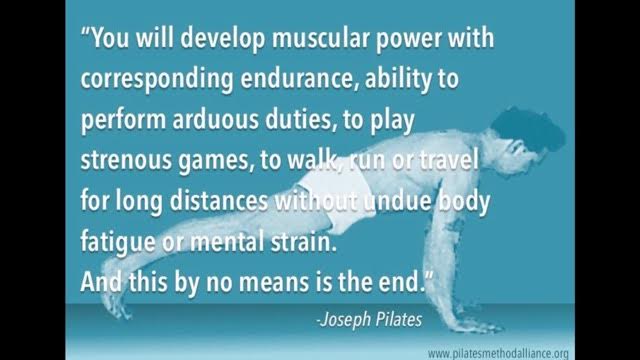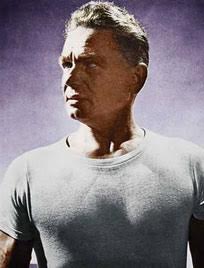Getting Started
Who Was Joseph Pilates?
A Brief History of the Man Behind the Method
Joseph Hubertus Pilates was born on December 9, 1883 in Mönchengladbach (near Düsseldorf), Germany. His father, a native of Greece, had been a prize-winning gymnast, while his German-born mother was a naturopath who believed in the principle of stimulating the body to heal itself without artificial drugs. No doubt his mother’s healing philosophy and father’s physical achievements greatly influenced Pilates’ later ideas on therapeutic exercise.
Small and sickly as a child, he was afflicted with asthma, rickets, and rheumatic fever, and was continually taunted by the bigger children. He quickly became determined to overcome his physical disadvantages. Thereupon young Joseph began to self-educate himself in anatomy, bodybuilding, wrestling, yoga, gymnastics, and martial arts. He soon achieved an almost Adonis-like “anatomical ideal,” to the extent that at the age of 14 he was posing as a model for anatomy charts. He was also an accomplished boxer, skier, and diver.
His physique was such that, like Eugen Sandow, Pilates in his public career as a circus entertainer used to perform a “living Greek statue” act. He was enamored of the classical Greek ideal of a man who is balanced equally in body, mind, and spirit, and he came to believe that our modern lifestyle, bad posture, and inefficient breathing were the roots of poor health.
Origins of the Pilates Method
His answer to these problems was to design a unique series of vigorous physical exercises that help to correct muscular imbalances and improve posture, coordination, balance, strength, and flexibility, as well as to increase breathing capacity and organ function. He also invented a variety of machines, based on spring-resistance, that could be used to perform these exercises.
There is a famous story about Pilates’ inspiration for his unique apparatus. Before World War I he was touring England as a circus performer and professional boxer, and even teaching self-defense to the Scotland Yard police force. But when war broke out, he found himself interned in England as an enemy alien on the Isle of Man.
The health conditions in the internment camps were not great, but Pilates insisted that everyone in his cell block participate in daily exercise routines to help maintain both their physical and mental well-being. However, some of the injured German soldiers were too weak to get out of bed. Not content to leave his comrades lying idle, Pilates took springs from the beds and attached them to the headboards and footboards of the iron bed frames, turning them into equipment that provided a type of resistance exercise for his bedridden “patients.”
These mechanized beds were the forerunners of the spring-based exercise machines, such as the Cadillac and the Universal Reformer, for which the Pilates method is known today. Pilates legend has it that during the great flu epidemic of 1918, not a single one of the soldiers under his care died. He credited his technique (which he called “Contrology”) for the prisoners’ strength and fitness — remarkable under the less than optimum living conditions of internment camps, which were hit especially hard by this deadly flu.
Pilates returned to Germany after the war, and his achievements with the German soldiers in the prison camp did not go unnoticed. In 1926, the Kaiser invited him to begin training the German secret police.
At this point Pilates decided to emigrate to the United States. He met his future wife and dedicated teaching partner, Clara, on the boat to New York City. Together they opened the first Body Contrology Studio on Eighth Avenue at 56th Street in Manhattan, in the same building as a number of dance studios.
For the rest of his life, he continued to develop his exercise system and to create new pieces of equipment for it. In this task he was evidently not only inventive, but also resourceful. It is said that his first Barrel was constructed from a beer keg, and he used the metal hoops from the keg to make his first Magic Circle.
A Method for the Masses
The earliest American students of Body Contrology were professional dancers, who were repeatedly injuring themselves and who responded well to Joe’s ministrations. Soon the famous choreographer George Balanchine, as well as other movement visionaries such as Martha Graham, Hanya Holm, Ruth St. Denis, and Jerome Robbins, became firm believers in Body Contrology. From there the the exercise, but not the name, caught on — everyone seemed to prefer to call it Pilates. Several of Joe and Clara’s former students, now Masters in their own right, later went on to open their own studios to carry on his teachings.
Joseph Pilates died on October 9, 1967 in New York City at the age of 84.
Nowadays, one can find Pilates studios all over the world, and the health sections and DVD racks in bookstores are overflowing with self-help titles offering instruction in the Method. Papa Joe truly was a man ahead of his time. Today, many famous athletes, dancers, models, and actors — as well as business professionals, housewives, and retirees — have joined the ranks of practitioners everywhere who are improving their lives with Pilates.


